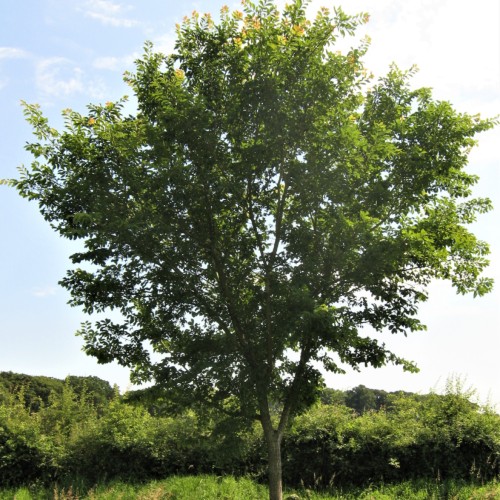
elm
Ulmus 'Morton' ACCOLADE
Cycle:
Perennial
Watering:
Average
Hardiness Zone:
4 - 9
Flowers:
Flowers
Sun:
Full sun
Leaf:
Yes
Growth Rate:
Low
Maintenance:
Low
Drought Tolerant:
Yes
Salt Tolerant:
Yes
watering
Elm (Ulmus 'Morton' ACCOLADE) should be watered at least once a week and requires approximately 1.25 - 2.5 gallons of water depending on the size and the environment around the tree when approximately the top 5-6 inches of soil is dry. Make sure not to water too much as this can cause root rot. Check the soil weekly using a soil moisture meter or your finger to determine if it needs additional water.
sunlight
Elm (Ulmus 'Morton' ACCOLADE) requires an abundance of sunlight and needs at least 6 hours of direct, unfiltered sunlight daily. During the spring and summer months, elms prefer to be exposed to at least 8 hours of sunlight each day to ensure their optimal health. In the winter, elms need only 4-5 hours of sunlight, but direct sunlight is still necessary.
pruning
Pruning an elm (Ulmus 'Morton' ACCOLADE) tree is an important part of its upkeep. Pruning should take place twice a year, once during late winter and once during mid- to late summer when the tree has finished blooming. When pruning in late winter, remove any dead branches and crossed branches. Also, prune away any weak and overcrowded shoots to encourage new growth. When pruning in mid- to late summer, focus on shaping the tree’s overall silhouette. Prune away water sprouts, or vigorous new growth, that is detracting from the tree’s shape. Also, remove any crossing branches as well as branches that are growing into the center of the tree or that are growing too close together. In general, no more than 25-30% of the branches should be removed in any given pruning session.
